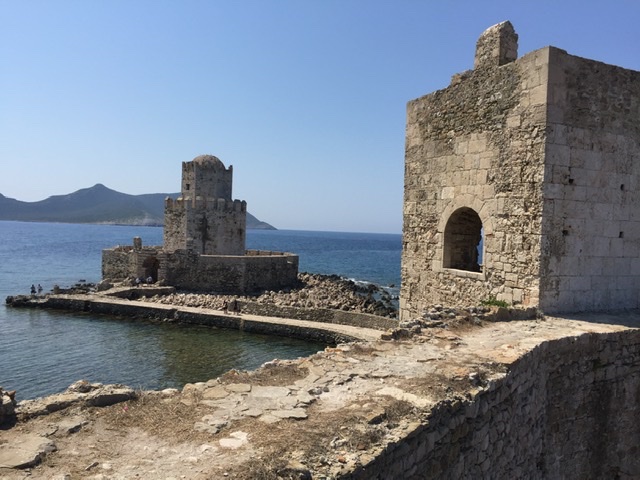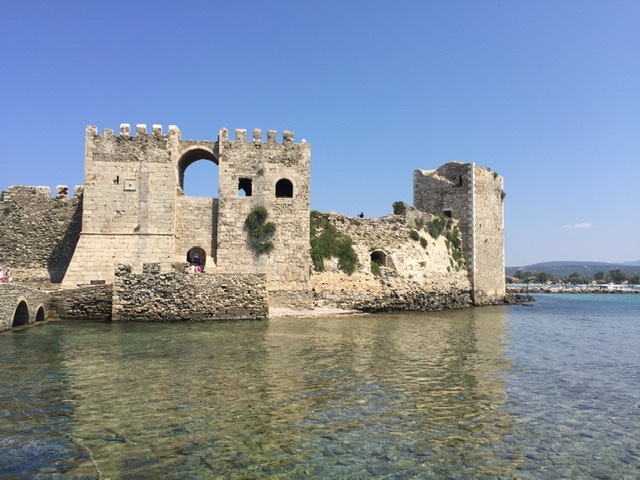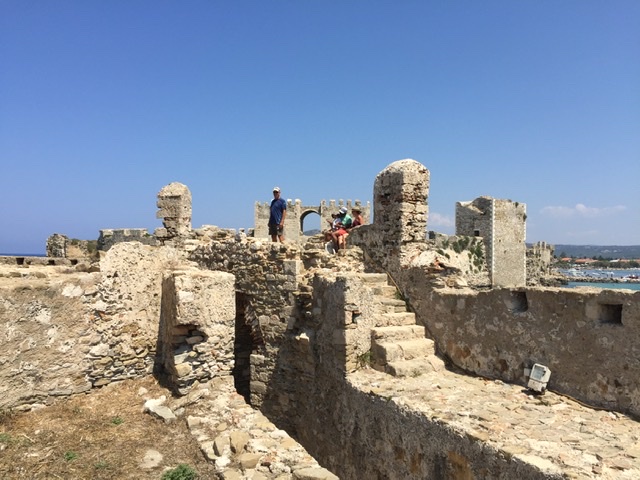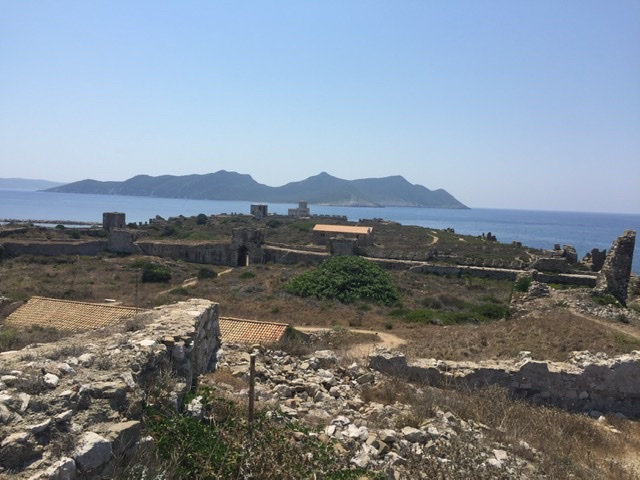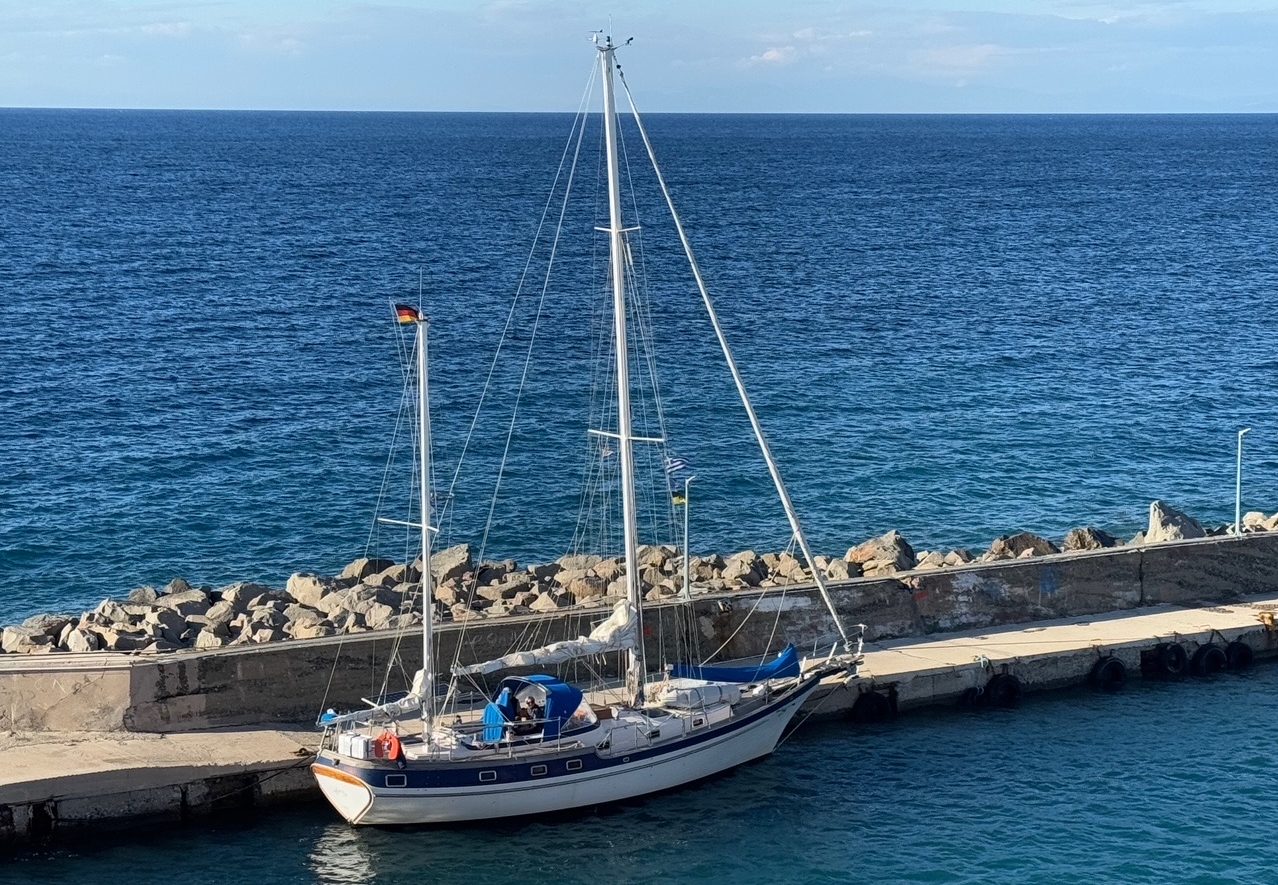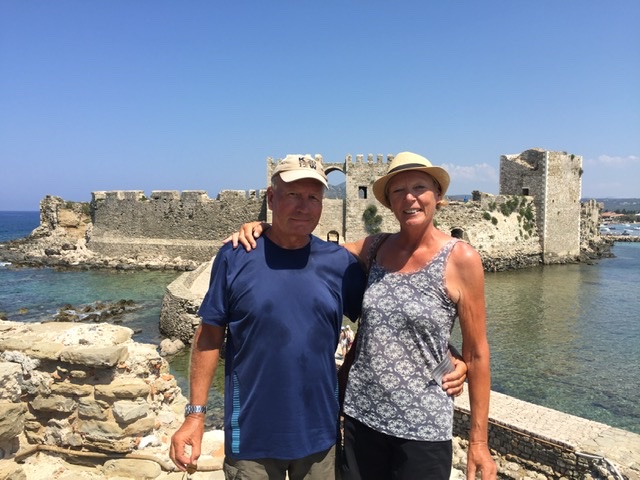
We leave the idyllic landscape of Elis with its wide plains, hills, olive groves, vineyards and villages. We drive further south, to Laconia, which was shaped by Sparta. From here comes - exactly! - the term laconic. Oldest explanation for this somewhat short-winded way of speaking, again from antiquity - Philip II of Macedonia to the laconic ruler: "When I have defeated you, I will burn your cities, destroy your army and your women will be widows!". The answer: "If."
The landscape becomes more rugged. Steep cliffs plunge vertically into the sea, white and reddish-brown cliffs, covered with grass and maquis, form a harsh, and in combination with the blue-turquoise sea, of course, a wonderful picture.
The town of Pylos is built on a hill and has a large Venetian fortress from the 16th century in front of it. It is situated on the edge of a wide bay - one of the best natural harbours in the Mediterranean - which is lined by towering cliffs - the Bay of Navarino, as Pylos was called in Venetian times. The Nestor Palace, which was excavated here, dates from far before. Nestor is the hero of Greek mythology, the King of Pylos, famous for his wisdom and eloquence, and also appears in the Iliad of Homer, in the Trojan War.
In 1827 a naval battle took place in Navarino between the Turkish fleet and a fleet of the English, French and Russians. This battle put an end to the Ottoman-Turkish domination and led to the independence of Greece, therefore in the central square a monument to the "three admirals", a similar one on a tiny island in the middle of the bay. This is something that is always noticeable in Greece: The fight for supremacy, also over Europe as a whole, between the (Western) European countries and the Ottoman Empire/the Turks, since the decline of the Eastern Roman Empire and then the conquest of Constantinople by the Turks in 1453. Actually, these conflicts were started in Western Europe by the Crusades in the 11th century. Partially, the lordships/occupations changed in a 100-year rhythm, the Venetians built fortresses, the Turks took them over and finished them……and vice versa.
Pylos is a small cheerful town with a central square with many pubs and bars. Short ways lead to the fortress and therefore to wonderful viewpoints over the bay. The Venetian fortress is a spacious building with long walls high above the sea, a church and a large meeting place. The church has, as many Greek churches, its model as a round building with towers in front of it in the Hagia Sophia in Istanbul; one was also pragmatic at that time: the church was partly used as a Christian-Greek-Ortohodox and partly as a mosque.
An attraction a little outside is the Oxbelly Bay, also called Golden Beach, a kilometre long sandy beach that separates a lagoon at the northern end of the bay.
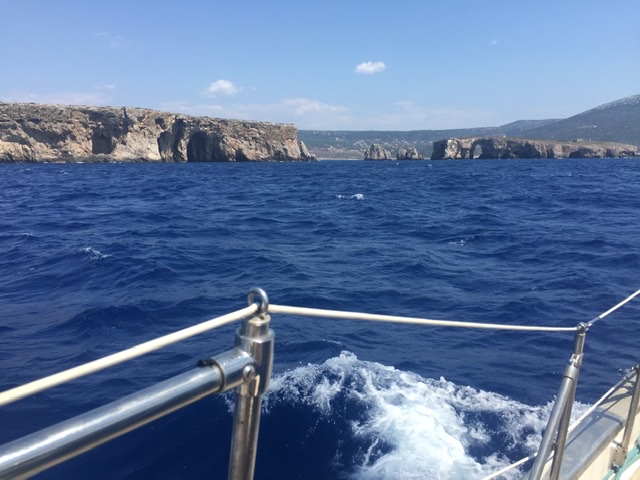
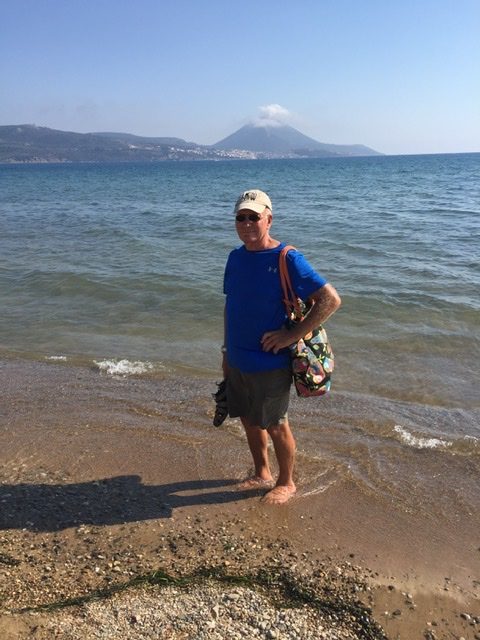
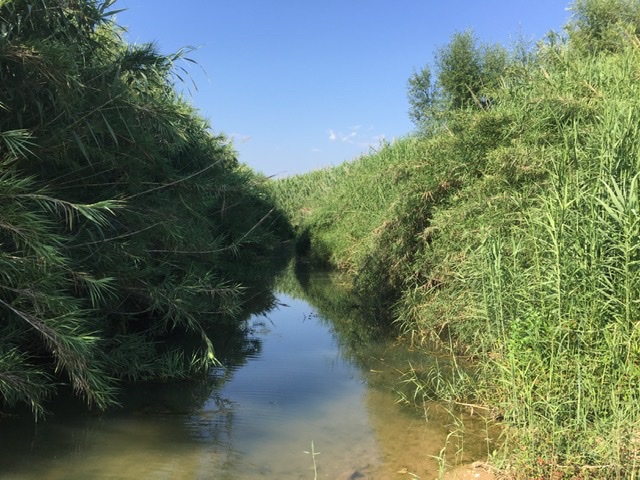
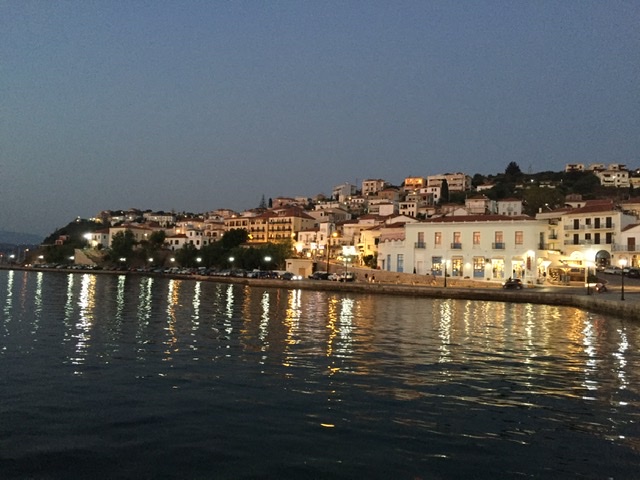
We are located in the marina - no utilities (electricity or water or diesel), also no fees, but quiet and cosy, also picturesque, directly below the rock face on which the houses of Pylos rise.
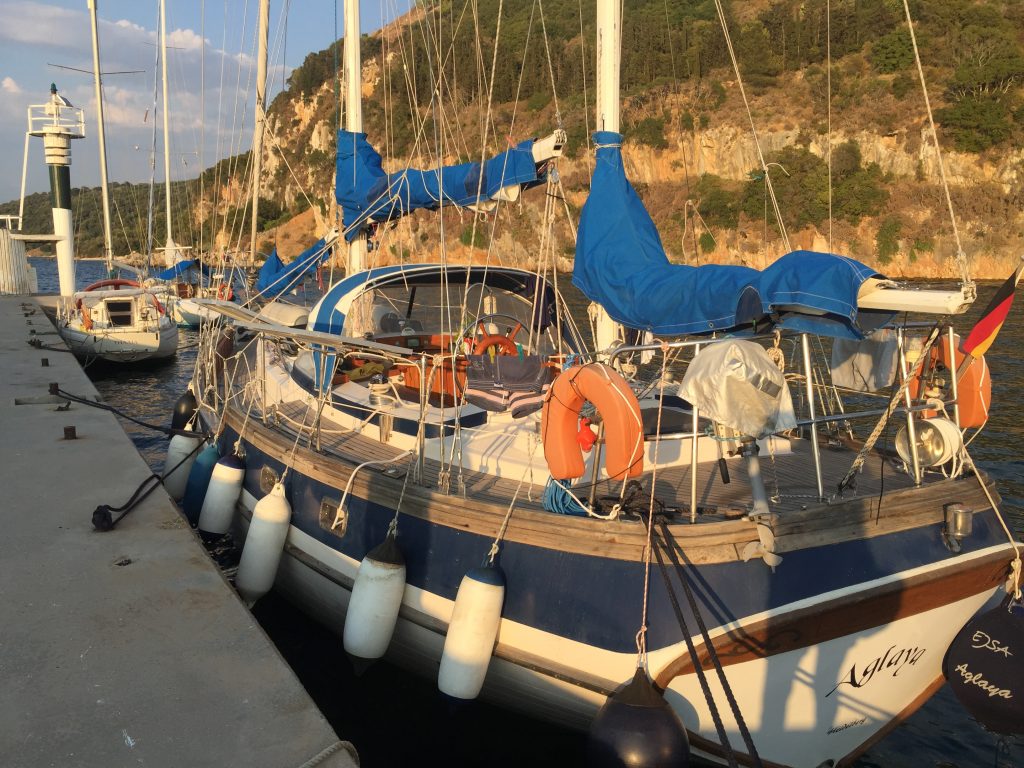
12 km south of Polos is Methoni, the southernmost tip of the western Peloponnese, here we are already in Messinia. An incredibly gigantic fortress, again partly Venetian, partly Turkish, limits and protects the bay. Huge long walls and an incredibly picturesque tower, partly used as a prison, partly as a lighthouse, partly as a military hospital, closes the ensemble to the south, ending in the turquoise sea, right next to the beach and cafes and bars, Methoni is a real small seaside resort.
